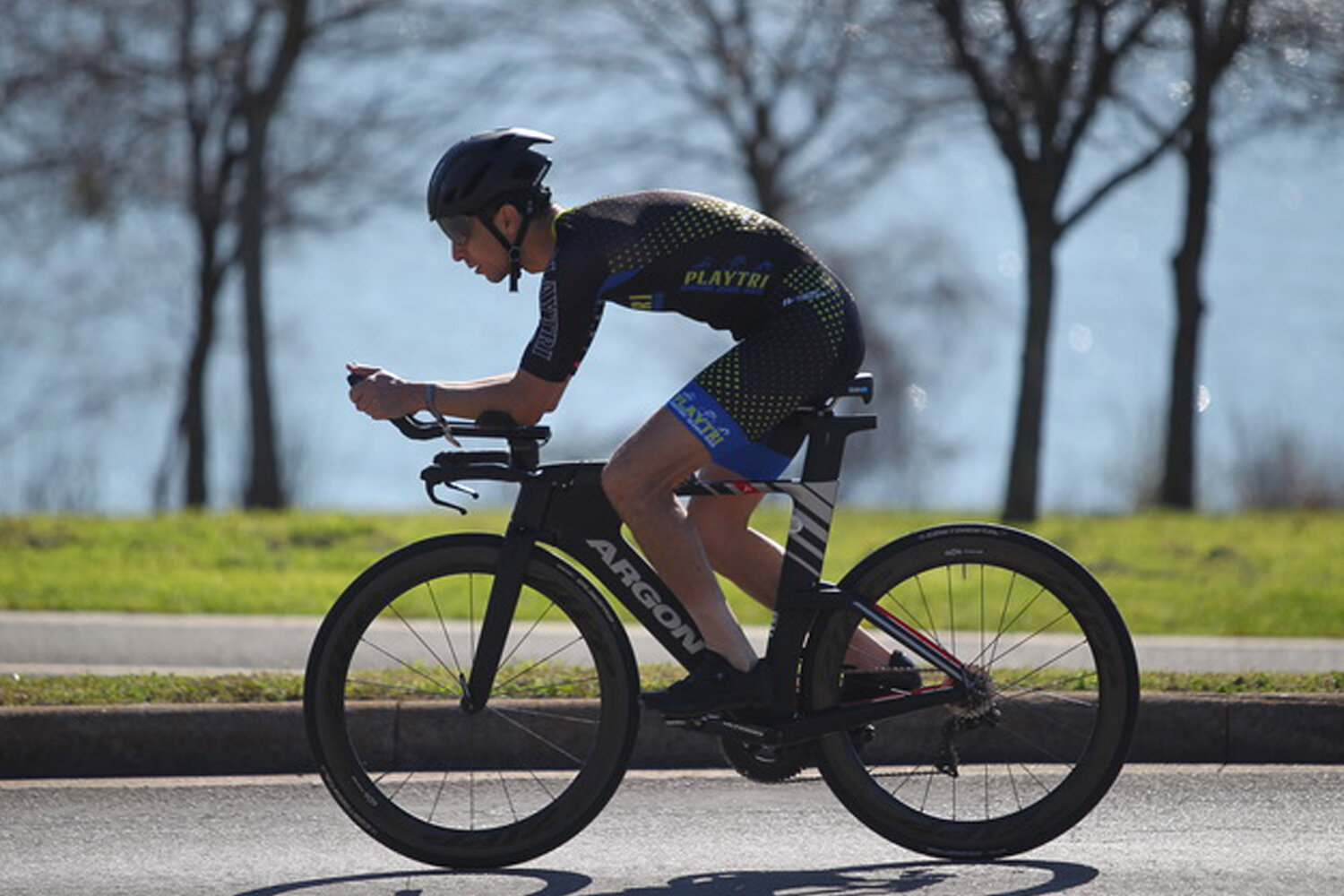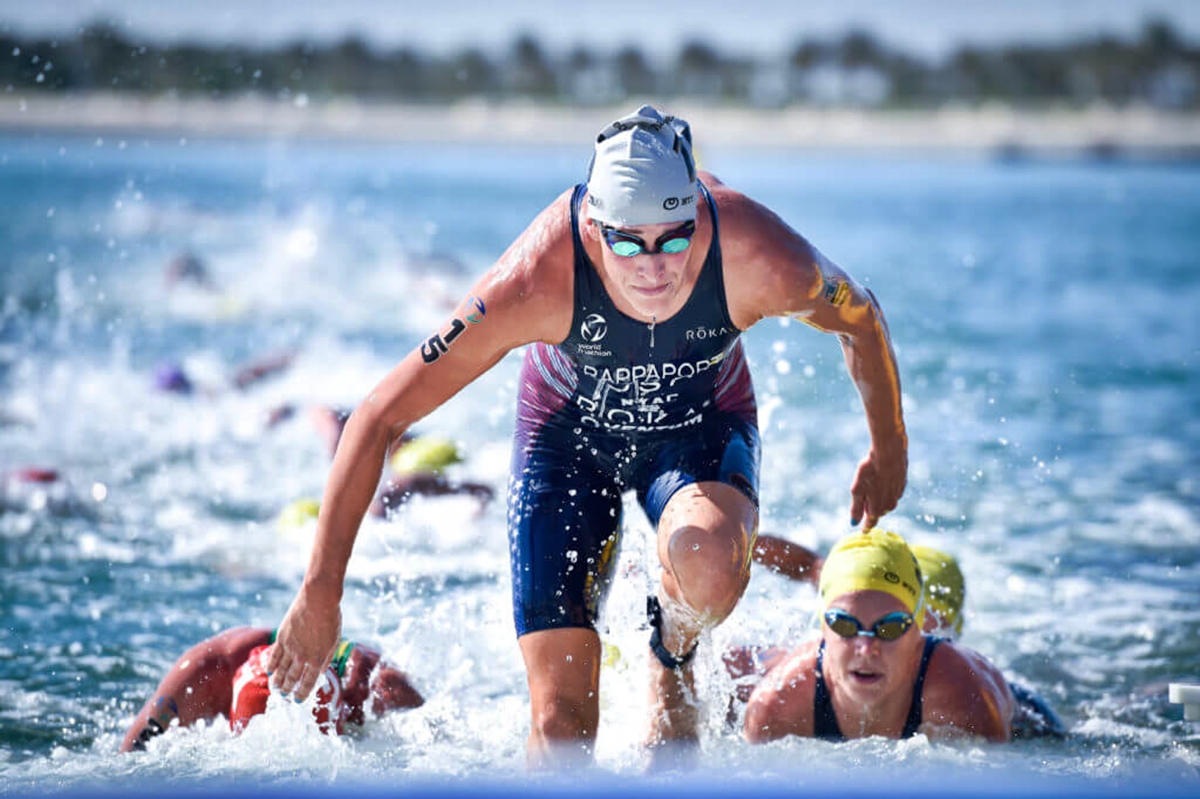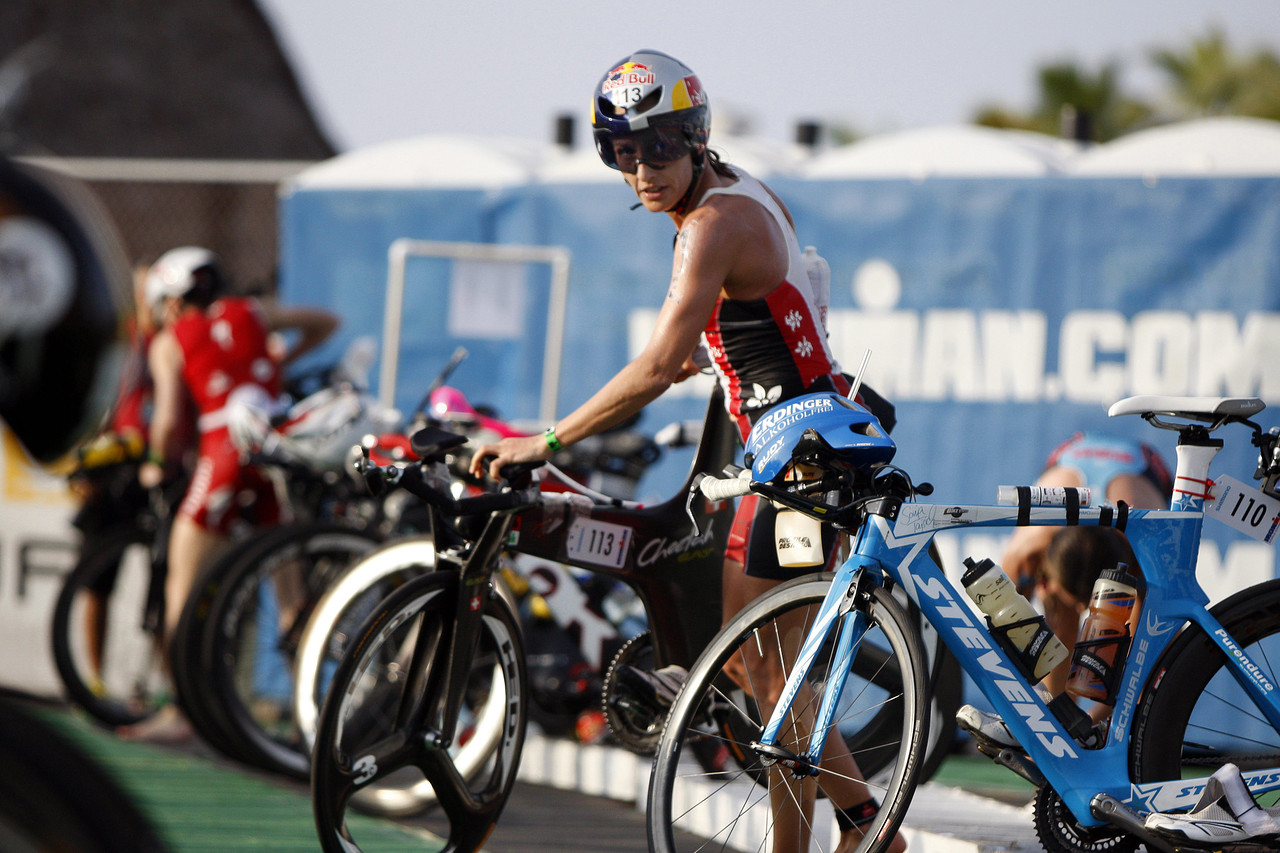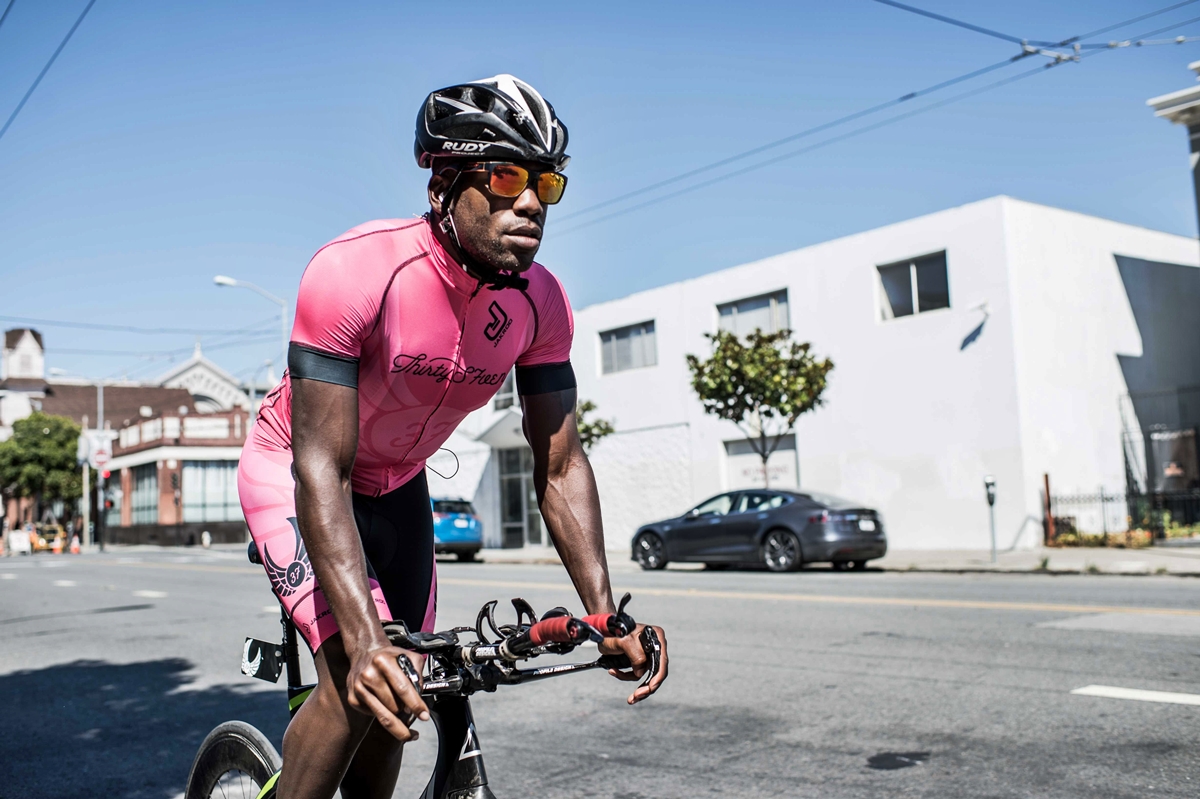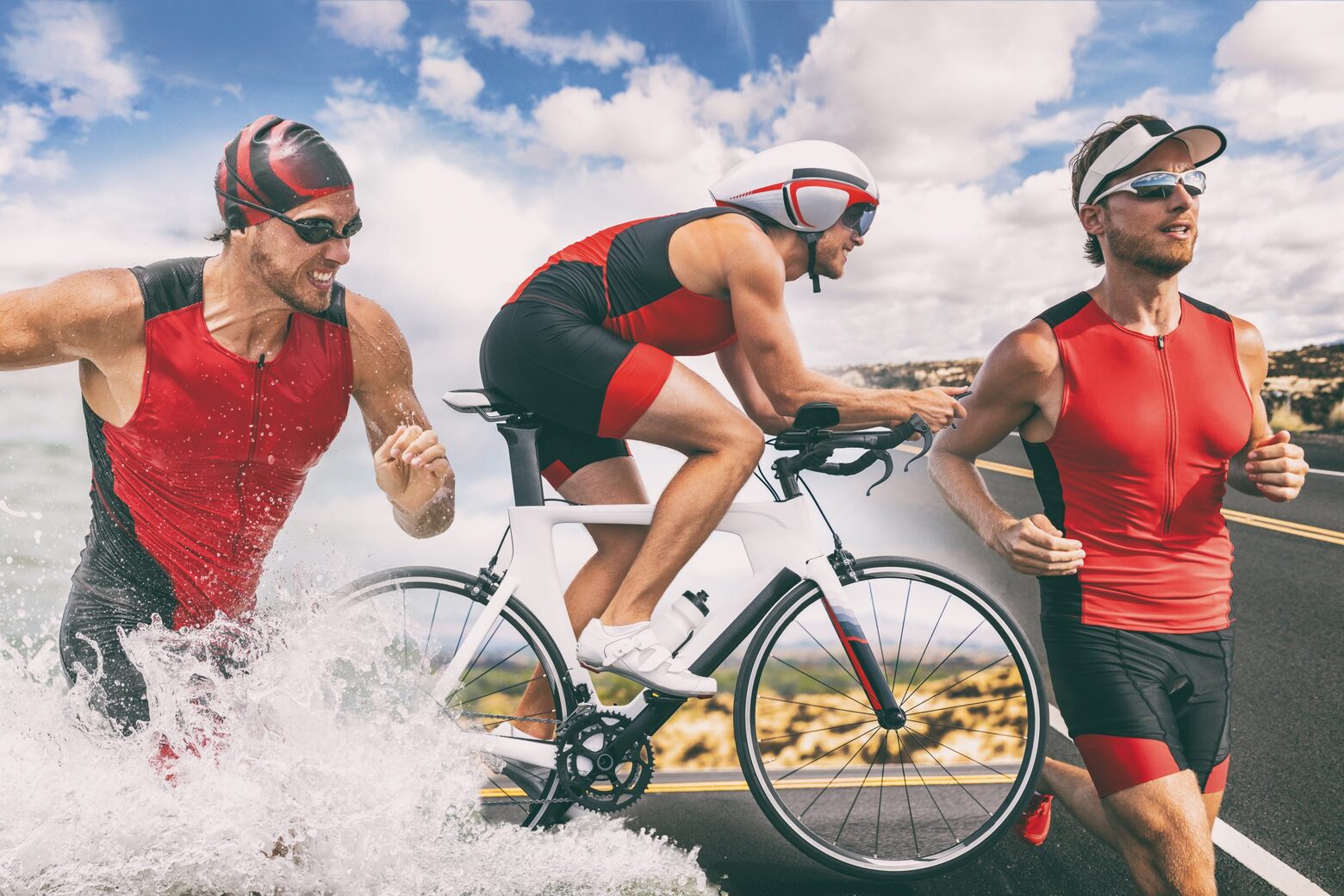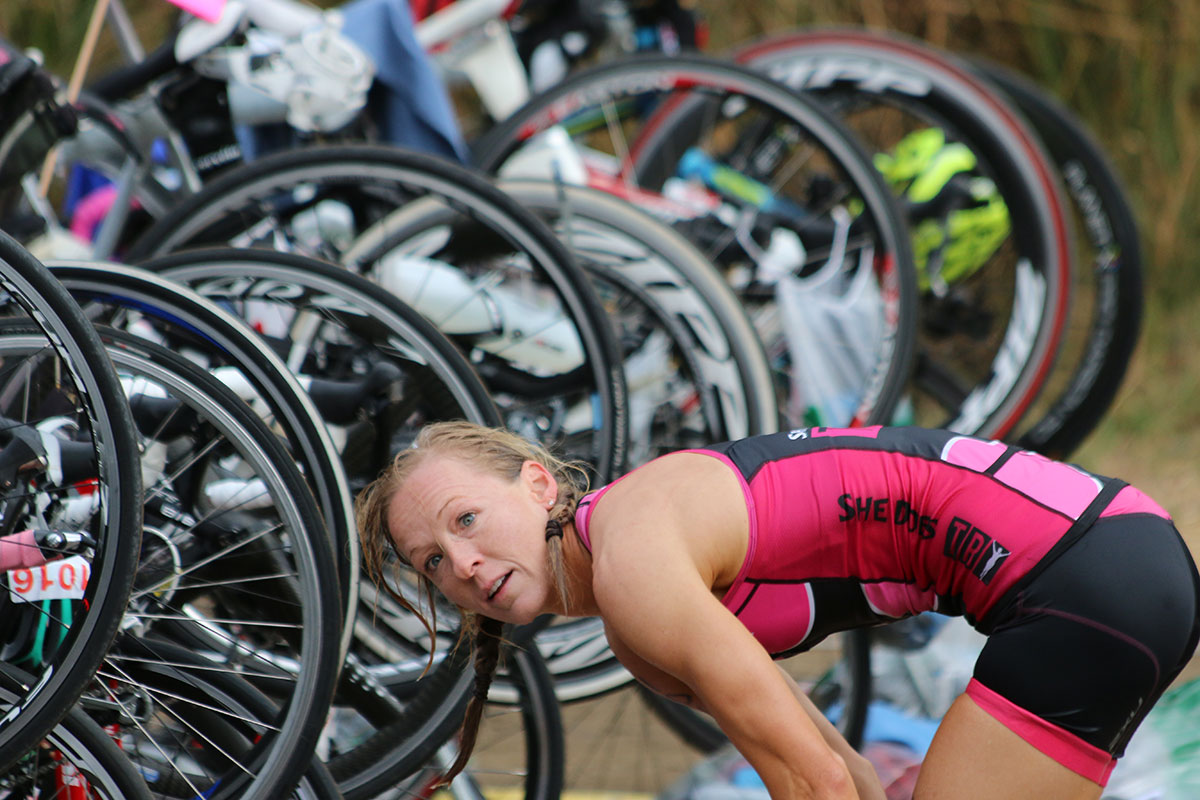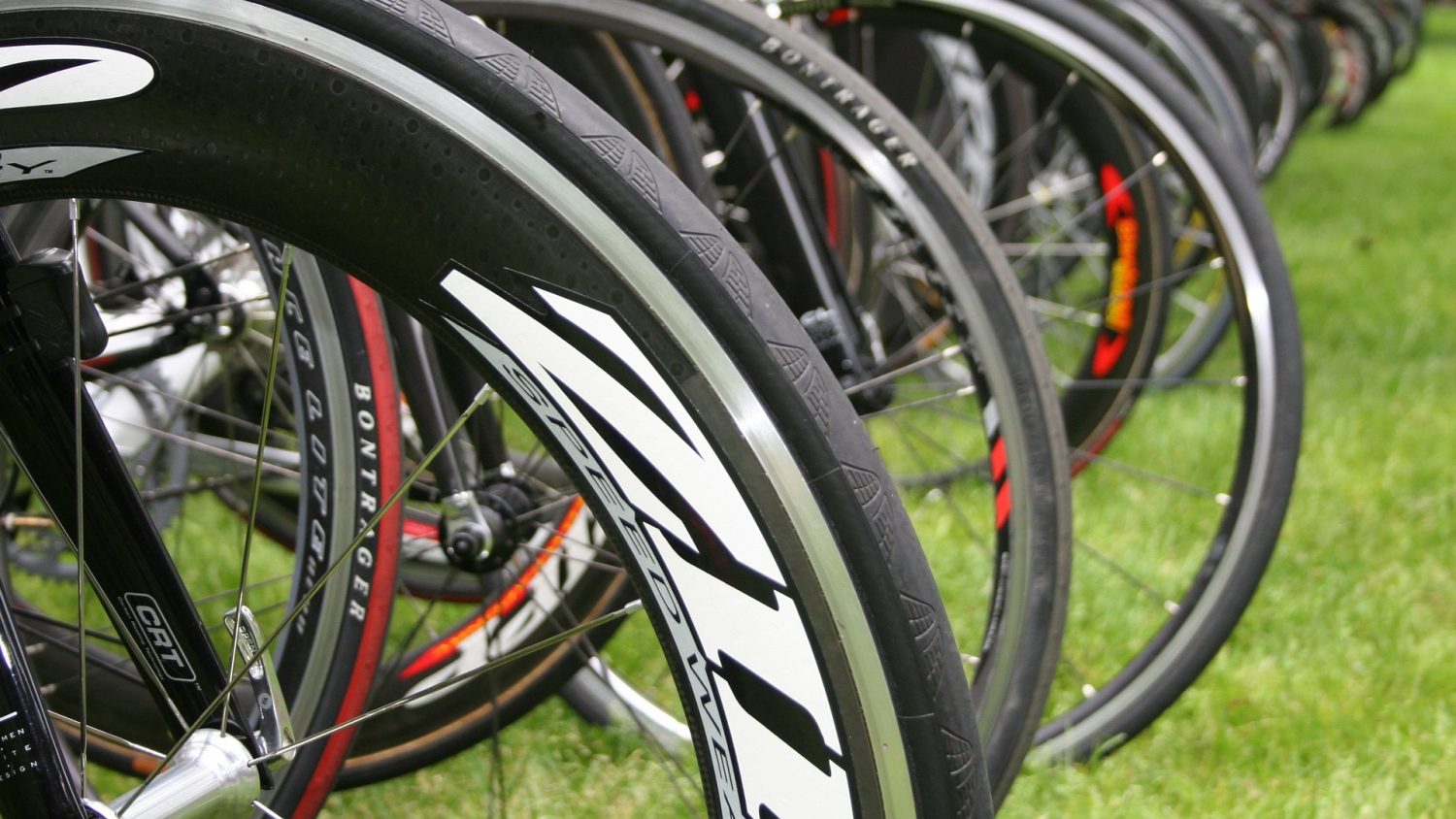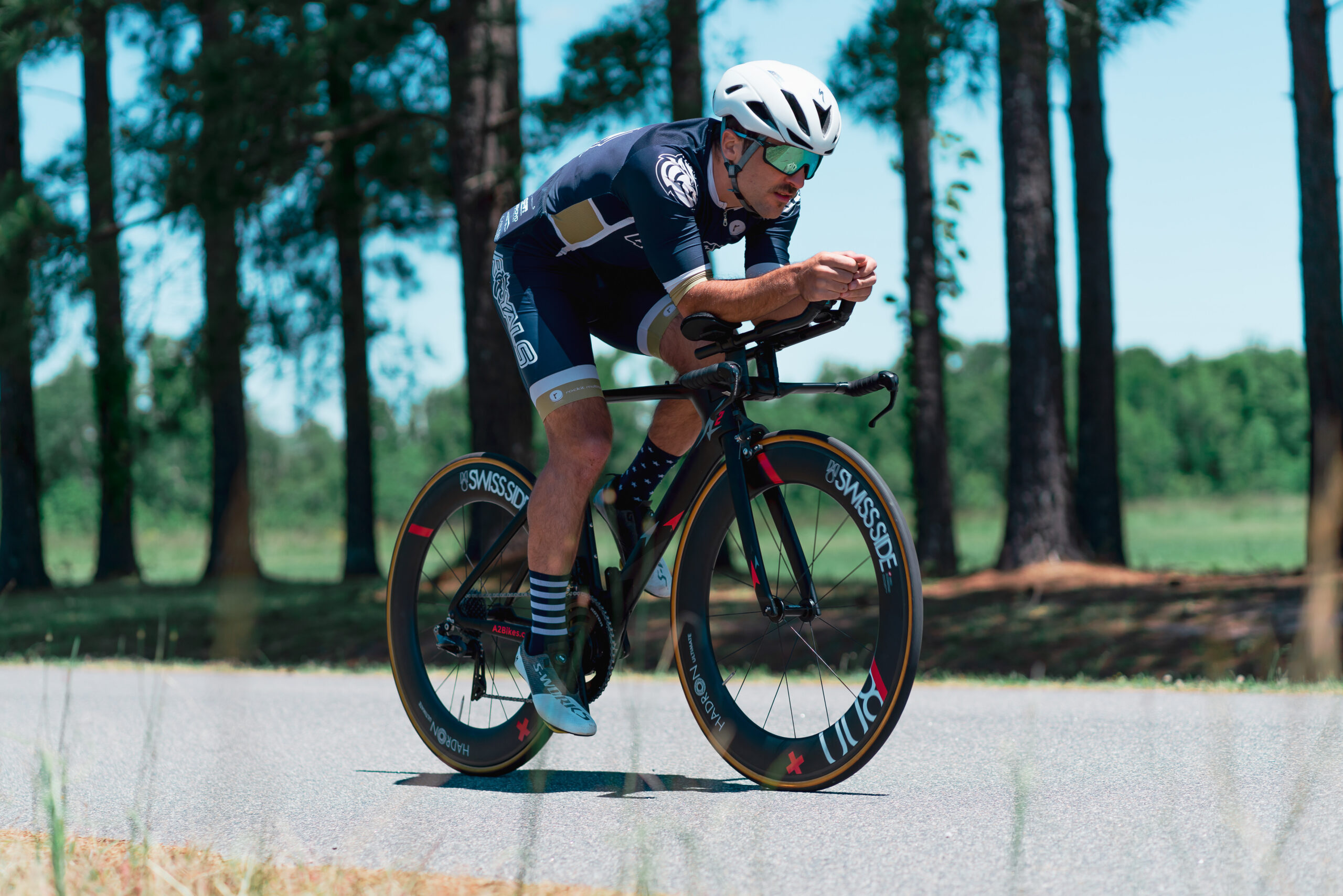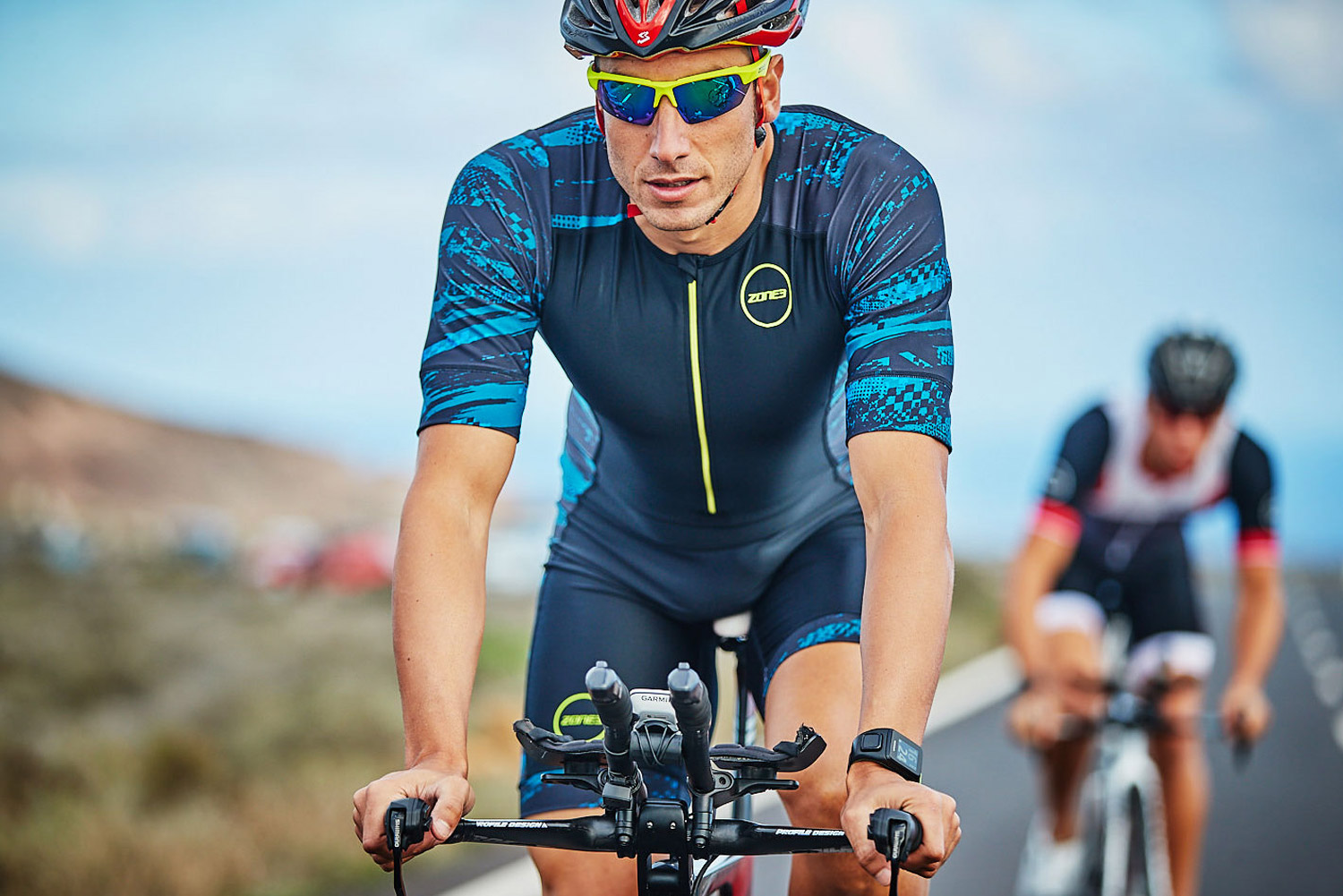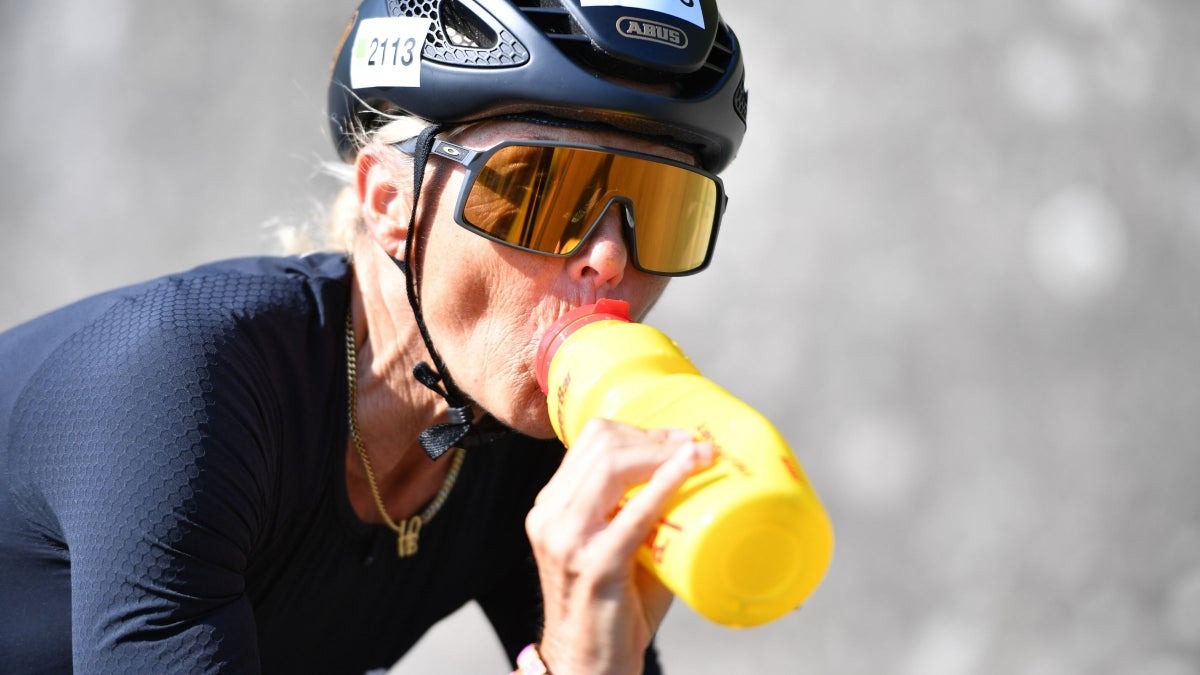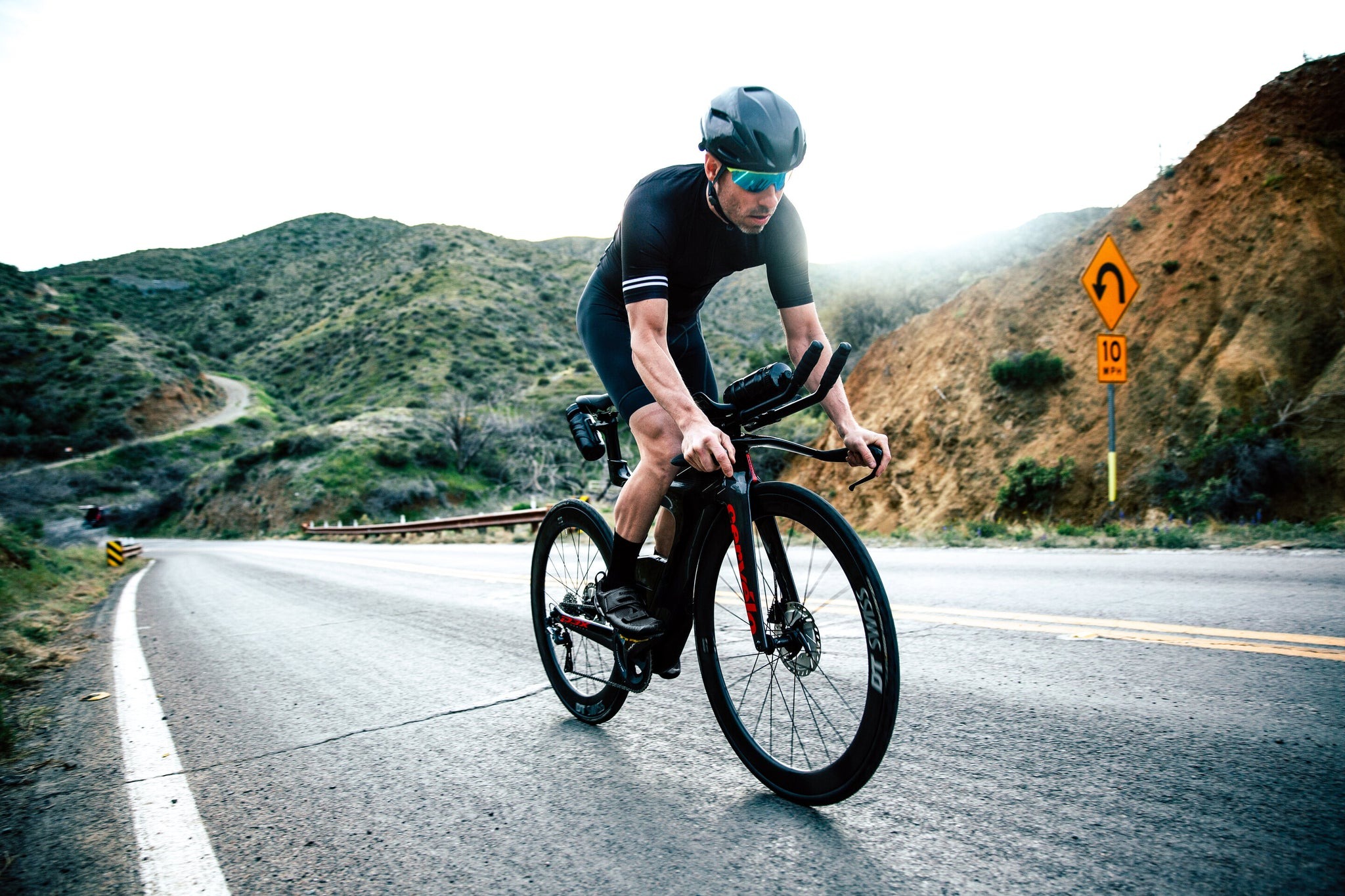

Featured
How To Choose A Triathlon Bike
Modified: January 2, 2024
Looking to buy a triathlon bike? Find out how to choose the perfect featured triathlon bike that meets your needs and enhances your performance.
Introduction
Welcome to the exciting world of triathlon! As a beginner triathlete, one of the most important decisions you’ll have to make is choosing the right bike. The bike leg of a triathlon is crucial, as it represents a significant portion of the overall race. Not only will the right bike improve your performance, but it will also enhance your overall enjoyment of the sport. In this article, we will guide you through the process of selecting a triathlon bike that suits your needs and goals.
When it comes to triathlon bikes, there are several factors to consider, including your budget, frame material, frame geometry, aerodynamics, components and gearing, wheels and tires, and fit and comfort. Each of these aspects plays a role in determining the right bike for you. By considering these factors and understanding your own preferences and goals, you’ll be well-equipped to make an informed decision.
Whether you’re a seasoned athlete looking to upgrade your current bike or a beginner who is just getting started, this article will serve as a comprehensive guide to help you navigate the world of triathlon bikes. We’ll cover the key elements to consider and provide valuable insights to help you narrow down your options.
It’s important to note that finding the perfect triathlon bike is a highly individual process. What works for one person may not work for another, so it’s essential to take your personal preferences and goals into account. Keep in mind that this decision is an investment not only in equipment, but also in your training and racing journey. A well-chosen triathlon bike can make a significant difference in your performance, so it’s worth taking the time to find the right one.
Now, let’s dive into the different aspects you should consider when choosing a triathlon bike.
Assess Your Needs and Goals
Before embarking on your journey to find the perfect triathlon bike, it’s important to assess your needs and set clear goals. Understanding what you want to achieve in the sport will guide you in making the right bike choice.
First, consider the distance of the triathlons you plan to participate in. Triathlon events can range from sprint distances to full Ironman races. If you’re aiming for shorter distances, such as sprints or Olympic distance races, you may prioritize a bike that offers more agility and maneuverability. On the other hand, if you have your sights set on longer distances, such as half or full Ironman races, a bike that prioritizes comfort and endurance may be more suitable.
Next, think about your experience level. Are you a beginner triathlete, or have you been competing in the sport for a while? Beginners may benefit from a more forgiving bike with a relaxed geometry that offers stability and confidence. As you gain experience and improve your skills, you may want to transition to a more aggressive and aerodynamic bike.
Your budget will also play a significant role in determining your options. Triathlon bikes can range in price from a few hundred dollars for entry-level models to several thousand dollars for high-performance machines. It’s crucial to establish a budget that aligns with your financial situation and stick to it. Don’t forget to factor in the cost of accessories such as pedals, helmets, and bike maintenance.
Another aspect to consider is your body type and flexibility. Triathlon bikes come in various frame geometries that cater to different body shapes and flexibility levels. For instance, if you have limited flexibility in your hips and lower back, a bike with a more upright geometry may be more comfortable for you. Conversely, if you’re highly flexible, a bike with a more aggressive, aerodynamic position may be suitable.
Lastly, think about your future ambitions and goals in the sport. Are you looking to compete at a high level and potentially qualify for races or championships? If so, investing in a high-performance bike may be beneficial. However, if you’re participating in triathlons primarily for recreational purposes and personal fitness, a more affordable and versatile bike may suffice.
By assessing your needs, experience level, budget, body type, and future goals, you’ll have a clear understanding of the criteria that should guide your bike selection process. Next, we’ll delve into the importance of budget considerations when choosing a triathlon bike.
Budget Considerations
When it comes to choosing a triathlon bike, budget is a crucial factor to consider. It’s essential to establish a realistic budget that aligns with your financial situation and prioritize what features are most important to you.
Triathlon bikes can vary widely in price, from entry-level models that are more budget-friendly to high-end, professional-grade bikes that come with a hefty price tag. While it can be tempting to go for the most expensive option, it’s important to remember that price doesn’t always equate to performance.
It’s worth considering what aspects of a triathlon bike are most important to you. If you’re just starting out in the sport or are participating in triathlons primarily for recreation and personal fitness, investing in a top-of-the-line, high-performance bike may not be necessary. There are many excellent mid-range options available that offer a balance of quality and affordability.
When setting your budget, it’s also important to factor in the cost of essential accessories such as pedals, a helmet, and bike maintenance. These additional expenses can add up, so it’s crucial to allocate a portion of your budget for these items.
Additionally, consider whether you’ll be purchasing the bike new or used. Buying a used bike can be a cost-effective option, but it’s essential to do thorough research, inspect the bike carefully, and potentially seek the assistance of a knowledgeable friend or professional to ensure you’re getting a good deal and a bike that’s in good condition.
Remember that while you may have a specific budget in mind, it’s important to remain flexible to some extent. You may find that with a slightly higher budget, you have access to bikes with significantly better components, materials, or aerodynamic features, which can enhance your overall performance and enjoyment of the sport. Consider striking a balance between your budget and the value you’ll get from the bike.
By having a clear budget in mind and understanding what features and aspects of a triathlon bike are most important to you, you’ll be able to narrow down your options and make a more informed decision. Next, we’ll explore the different frame materials used in triathlon bikes and their implications.
Frame Material
The frame material of a triathlon bike is an important consideration, as it affects the bike’s weight, stiffness, durability, and overall performance. There are several common frame materials used in triathlon bikes, each with its own characteristics and benefits.
Carbon fiber is a popular choice for high-performance triathlon bikes. Carbon frames are lightweight, strong, and offer excellent vibration dampening properties, resulting in a smoother and more comfortable ride. Carbon fiber frames can be molded into intricate shapes, allowing for greater aerodynamic efficiency. However, carbon fiber frames tend to be more expensive compared to other materials.
Aluminum is another commonly used frame material in triathlon bikes. Aluminum frames are known for their affordability and durability. They offer a good balance of weight and stiffness, making them ideal for athletes on a budget or beginners just getting into the sport. While aluminum frames may not provide the same level of vibration dampening as carbon fiber, they still offer a responsive and enjoyable ride.
Titanium is a premium frame material choice for triathlon bikes. Titanium frames are renowned for their durability, corrosion resistance, and strength-to-weight ratio. They provide a smooth and comfortable ride without sacrificing stiffness. However, titanium frames tend to be more expensive and less common compared to carbon fiber and aluminum.
Steel frames, although less commonly used in modern triathlon bikes, still have a dedicated following. Steel frames offer excellent durability, a comfortable ride quality, and the ability to absorb road vibrations effectively. They tend to be heavier than carbon fiber or aluminum frames but can provide a more forgiving and stable ride.
It’s important to consider your own preferences and priorities when selecting a frame material. If you value lightweight and aerodynamic performance, carbon fiber may be the ideal choice. If durability and affordability are your main concerns, aluminum or steel can be excellent options. Ultimately, the frame material should align with your budget and the type of riding experience you seek.
Beyond just the frame material, it’s also important to consider the quality of construction and design of the frame. Look for well-known and reputable brands that have a track record of producing high-quality frames. Consider reading reviews and seeking expert opinions to ensure you’re choosing a triathlon bike with a frame that is not only made of the right material but is also crafted with precision and attention to detail.
Now that we’ve explored the importance of frame material and its impact on the bike’s performance and characteristics, let’s move on to the next section: frame geometry.
Frame Geometry
The frame geometry of a triathlon bike plays a critical role in determining your riding position and comfort. It affects the bike’s handling, aerodynamics, and overall performance. Understanding the different aspects of frame geometry will help you find a bike that suits your body type and riding style.
One important factor to consider is the stack and reach measurements. The stack measurement refers to the vertical distance from the bottom bracket to the top of the head tube, while the reach measurement is the horizontal distance from the bottom bracket to the top of the head tube. These measurements determine the bike’s overall height and length, respectively.
A more relaxed, upright stack and reach measurement will result in a more comfortable riding position, which can be beneficial for longer races or athletes who prefer a more relaxed posture. On the other hand, a more aggressive stack and reach measurement will put you in a more aerodynamic and aggressive riding position, allowing for better power transfer and speed but potentially sacrificing comfort.
Another aspect of frame geometry to consider is the seat tube angle. The seat tube angle is the angle formed between the seat tube and the ground. A steeper seat tube angle, typically around 78 to 81 degrees in triathlon bikes, pushes your hips forward, allowing for a more aerodynamic position and better power output.
The head tube angle is also important to consider. The head tube angle is the angle formed between the head tube and the ground. Triathlon bikes generally have a more steep head tube angle, typically around 72 to 74 degrees, which contributes to the bike’s stability while providing responsive handling during fast descents.
Additionally, frame geometry influences the wheelbase and chainstay length. The wheelbase is the distance between the front and rear axles of the bike. A longer wheelbase can provide stability, especially at higher speeds. The chainstay length, on the other hand, affects the bike’s responsiveness and maneuverability. Shorter chainstays can result in a more agile and lively ride, while longer chainstays offer stability.
It’s important to note that frame geometry is not a one-size-fits-all solution. Every individual has different body proportions, flexibility, and riding preferences. It’s recommended to test ride different bikes with various frame geometries to find the one that feels most comfortable and suits your riding style.
Additionally, if you have any existing injuries or flexibility limitations, it may be beneficial to seek the advice of a professional bike fitter who can assess your body position on the bike and recommend adjustments or specific frame geometries that accommodate your needs.
By considering the stack and reach measurements, seat tube angle, head tube angle, wheelbase, and chainstay length, you’ll be able to find a triathlon bike with a frame geometry that optimizes your comfort, aerodynamics, and overall performance.
Now that we’ve explored frame geometry, let’s move on to the next section: aerodynamics.
Aerodynamics
Aerodynamics is a crucial consideration when choosing a triathlon bike, as it directly impacts your speed and efficiency on the bike leg of the race. Triathlon bikes are specifically designed to minimize drag and maximize aerodynamic performance to help you slice through the air with minimal resistance.
One of the key features that contribute to the aerodynamics of a triathlon bike is the frame design. Triathlon bikes often feature a unique frame shape with elements such as teardrop-shaped tubing, truncated airfoils, and integrated components. These design features are aimed at reducing turbulence and minimizing drag.
The integration of components is another aspect that helps improve aerodynamics. Fully integrated components, such as an integrated handlebar, stem, and brakes, create a smoother and more streamlined profile, reducing drag. Cable routing is often internal to further minimize air resistance.
The bike’s fork and seatpost can also contribute to its aerodynamic performance. A fork with an aerodynamic design, such as aero-shaped legs and a curved profile, can reduce drag. Similarly, a seatpost with an aerodynamic design, such as a truncated airfoil shape, can help improve efficiency by reducing drag in that area.
Wheel choice also plays a significant role in aerodynamics. Deep section or disc wheels are often favored for triathlon racing due to their aerodynamic benefits. These wheel designs help reduce drag and provide better stability in crosswinds, resulting in improved overall performance.
It’s important to note that while aerodynamics can provide a performance advantage, it’s not the sole factor to consider. The balance between aerodynamics and other aspects such as weight, stiffness, and comfort should be carefully considered based on your specific needs and race conditions.
It’s worth mentioning that the benefits of aerodynamics are most significant at higher speeds. If you primarily participate in shorter distance triathlons or races with technical courses, maneuverability and handling may be more important than pure aerodynamic efficiency.
Finally, it’s crucial to consider your own body position and how it interacts with the bike’s aerodynamics. The position you adopt on the bike can significantly impact its aerodynamic performance. Working with a bike fitter or seeking professional advice can help ensure that your body position is optimized for aerodynamics and maximum efficiency.
By considering the frame design, integrated components, fork and seatpost design, wheel choice, and your own body position, you’ll be able to select a triathlon bike that offers optimal aerodynamic performance for your specific racing needs.
Now that we’ve explored aerodynamics, let’s move on to the next section: components and gearing.
Components and Gearing
Components and gearing are important considerations when choosing a triathlon bike, as they can significantly impact your performance and riding experience. The right components and gearing setup can enhance your efficiency, shifting precision, and overall enjoyment of the bike.
When it comes to components, one of the main considerations is the drivetrain. Most triathlon bikes use a dedicated tri-specific groupset, which is optimized for the demands of triathlon racing. These groupsets typically include integrated brake and shift levers, allowing for more seamless and precise shifting while maintaining an aerodynamic position.
The number of gears is also an important aspect to consider. Triathlon courses are often flat or have rolling hills, so having a wide range of gear options can help you find the most efficient cadence throughout the race. While a traditional road bike may have a double chainring setup (usually 53/39T) and 10 or 11 rear cogs, triathlon bikes often opt for a larger chainring in front, such as a 55T or even 58T, paired with a smaller inner chainring (e.g., 42T or 44T). This setup allows for higher top-end speed while still providing low enough gears for climbing.
Braking performance is another consideration. Triathlon bikes often feature aerodynamically optimized brakes that provide sufficient stopping power while minimizing wind resistance. Consider the braking system and ensure that it meets your requirements in terms of responsiveness, modulation, and reliability.
The choice of wheels and tires can also affect your performance. Deep-section carbon wheels offer improved aerodynamics but can be more challenging to handle in crosswinds. It’s important to select wheels that match your skill level and riding conditions. Additionally, tires with a good balance of rolling resistance, puncture resistance, and grip can enhance your speed and confidence on the bike.
Other components to consider include the saddle, handlebars, and pedals. The saddle should be comfortable and supportive for long-distance riding. The handlebars should allow for an aerodynamic riding position and be adjustable to suit your preferences. The choice of pedals depends on your cleat system preference and personal preference for platform size and style.
It’s worth noting that while high-quality components can enhance your riding experience, they can also come at a higher cost. You’ll need to weigh your budget against the benefits and choose the components that provide the best balance for your needs.
Reading reviews and seeking advice from experienced triathletes or bike experts can provide valuable insights into the performance and reliability of different components and gear options. Doing your research and testing out different setups whenever possible can help you find the optimal combination that suits your preferences and goals.
Now that we’ve explored components and gearing, let’s move on to the next section: wheels and tires.
Wheels and Tires
When it comes to triathlon bikes, the choice of wheels and tires is an essential consideration as they can significantly impact your performance and overall riding experience. The right combination of wheels and tires can improve your speed, handling, and comfort on the bike.
First, let’s discuss wheels. Triathlon bikes often feature deep-section carbon wheels that offer enhanced aerodynamics. These wheels have a greater depth, usually around 40mm or more, which helps reduce drag and increase speed. The deep rim profile cuts through the air more efficiently, allowing you to maintain higher speeds with less effort. However, it’s important to note that deep-section carbon wheels can be more susceptible to crosswinds, requiring extra caution and adjustment of your riding position.
Another consideration when it comes to wheels is the choice between clincher and tubular tires. Clincher tires are the most common and convenient choice for triathlon bikes. They have a bead that hooks onto the rim and can be easily replaced or repaired when needed. Tubular tires, on the other hand, are glued or taped onto the rim and offer a smoother ride and better performance due to their lower rolling resistance. However, they require more expertise and time for installation and maintenance.
Tire choice is equally important in maximizing your performance on a triathlon bike. The right tires can provide a balance between low rolling resistance, puncture resistance, and grip. Look for tires that are specifically designed for triathlon or time trials, as they are often optimized for speed and aerodynamics. These tires typically have a smooth and slick tread pattern and a higher thread count for improved performance.
Consider the width of the tires as well. Triathlon bikes typically use narrower tires, ranging from 23mm to 28mm, to reduce aerodynamic drag. Narrower tires offer less rolling resistance on smooth surfaces but may sacrifice some comfort and stability. However, if you anticipate encountering rough or uneven roads during your races or training, opting for slightly wider tires can provide better grip and a more comfortable ride.
It’s important to note that tire pressure plays a crucial role in both performance and comfort. Higher tire pressures reduce rolling resistance but can result in a harsher ride. Experiment with tire pressures to find the optimal balance between speed and comfort based on your weight, road conditions, and preferences. Consulting tire manufacturers’ recommendations and seeking advice from experienced triathletes can provide valuable insights into tire pressure choices.
The best way to determine the ideal combination of wheels and tires for your triathlon bike is to test different setups and gather feedback from experienced riders. Consider renting or borrowing different wheelsets and tires for trial rides or seek advice from a bike shop or professional bike fitter who can guide you in selecting the best options for your specific needs and goals.
Now that we’ve explored wheels and tires, let’s move on to the next section: fit and comfort.
Fit and Comfort
When selecting a triathlon bike, finding the right fit and prioritizing comfort are vital considerations. A proper bike fit ensures that you can ride efficiently, minimize the risk of injury, and enjoy a comfortable experience during long-duration events. Here are a few key factors to consider when it comes to fit and comfort.
First and foremost, it’s crucial to get a professional bike fitting or at least have a basic understanding of bike fit principles. A bike fitter will assess your body’s proportions, flexibility, and riding goals to determine the optimal frame size, handlebar height, saddle position, and other crucial measurements. Investing in a professional bike fit can make a significant difference in your overall comfort and performance on the bike.
The saddle is a critical component when it comes to comfort. An appropriately sized and well-padded saddle that matches your body’s anatomy can prevent discomfort and numbness during long rides. Additionally, consider the saddle shape and cutout design, as these factors can reduce pressure on sensitive areas.
Handlebars and aerobar extensions come in various shapes, sizes, and widths to accommodate different riding preferences and body positions. Finding the right handlebar width and reach can enhance your stability and control on the bike. The aerobar extensions should allow for a comfortable and aerodynamic position, allowing you to maintain an efficient riding posture without straining your neck, shoulders, or back.
Another factor to consider is the adjustability of the bike’s components. Look for a triathlon bike that offers a wide range of adjustability in terms of saddle height, fore/aft position, handlebar height, and reach. This adjustability allows you to fine-tune your riding position and make subtle changes to enhance comfort and efficiency as your fitness, flexibility, and riding goals evolve.
It’s also important to consider the overall comfort of the bike, beyond just the fit. Factors such as frame material, geometry, and vibration dampening properties can affect the smoothness of the ride. Carbon fiber frames often provide better vibration absorption compared to aluminum or steel frames, leading to a more comfortable experience.
While comfort is crucial, it’s also essential to find a balance between comfort and performance. A more aerodynamic position may improve speed and efficiency but can be less comfortable over longer distances. It’s worth experimenting with different setups and consulting a bike fitter to find the optimal balance for your body and racing goals.
Lastly, take the time to gradually adapt to your new bike and make minor adjustments as needed. Your body may need time to adapt to a new riding position, especially if you’ve made significant changes to your bike setup. Listen to your body and make adjustments accordingly to ensure that you’re riding in a position that allows for optimum efficiency and comfort.
By prioritizing a proper bike fit, selecting comfortable components, and finding a balance between comfort and performance, you’ll be able to enjoy your rides, train longer, and perform at your best during triathlon races.
Now that we’ve explored fit and comfort, let’s move on to the next section: reviews and recommendations.
Reviews and Recommendations
When it comes to choosing a triathlon bike, it can be helpful to read reviews and seek recommendations from experienced triathletes, cycling experts, and trusted sources. Reviews provide valuable insights into the performance, durability, and overall quality of different bike models.
Start by researching reputable sources such as cycling magazines, online publications, and trusted websites that specialize in triathlon and cycling gear reviews. These sources often provide detailed analysis, comparisons, and ratings of various triathlon bikes, components, and accessories. Pay attention to factors such as aerodynamics, performance, comfort, and value for money.
Another valuable resource is real-world reviews and recommendations from fellow triathletes. Join triathlon forums, social media groups, and online communities where you can engage with experienced athletes who have firsthand knowledge of different bike models. Ask for their opinions, experiences, and any advice they have to offer. Their insights can provide valuable information about specific models, durability, customer service, and any potential issues to be aware of.
It’s important to consider multiple perspectives and review different sources to get a well-rounded understanding of a specific bike model’s strengths and weaknesses. Keep in mind that individual preferences, riding styles, and budgets can vary, so what works for one person may not work for another. Compile a list of triathlon bikes that receive consistently positive reviews and align with your specific needs and goals.
Once you have a shortlist of potential bikes, it’s beneficial to test ride them whenever possible. Visit local bike shops, contact brands or dealers, or attend cycling expos and events where you can try out different makes and models. Testing the bikes allows you to experience firsthand how they handle, ride, and feel – factors that can’t be fully captured in reviews alone.
In addition to reviews, seeking recommendations from professionals such as bike fitters or coaches can provide valuable insights into selecting the right triathlon bike. These experts work closely with athletes of varying abilities and have extensive experience with different bike models. They can consider your specific needs, body type, and goals to recommend a bike that suits your requirements.
Ultimately, the goal is to make an informed decision based on a combination of expert opinions, customer reviews, and personal experiences. By doing thorough research, seeking recommendations, and testing out different models, you’ll be able to choose a triathlon bike that meets your needs, enhances your performance, and provides an enjoyable riding experience.
Now that we’ve explored reviews and recommendations, let’s move on to the concluding section of our guide.
Conclusion
Choosing the right triathlon bike is an important decision that can greatly impact your performance and enjoyment in the sport. By considering factors such as your needs, goals, budget, frame material, frame geometry, aerodynamics, components and gearing, wheels and tires, fit and comfort, and reviews and recommendations, you’ll be well-equipped to make an informed decision.
Assessing your needs and goals, understanding your budget, and considering your body type and flexibility are essential first steps. From there, you can dive into the specifics of frame material, frame geometry, and aerodynamics, ensuring that you find a bike that suits your individual preferences and race conditions.
Components and gearing play a crucial role in optimizing your performance and finding the right balance between speed, efficiency, and comfort. Likewise, wheels and tires can greatly influence your speed, handling, and overall comfort on the bike.
Never underestimate the importance of fit and comfort. A properly fitted bike, along with comfortable components, will allow you to ride more efficiently, minimize the risk of injury, and enjoy your time on the bike to the fullest.
Reviews and recommendations provide valuable insights into the performance and quality of different triathlon bikes. Combining expert opinions, real-world experiences, and personal test rides will help you narrow down your options and find the bike that best suits your individual needs and preferences.
Remember, choosing a triathlon bike is not just about finding the latest and most expensive model. It’s about finding the bike that aligns with your goals, fits within your budget, and provides the best combination of comfort, performance, and durability for your racing journey.
Take your time to research, test, and gather recommendations. When you find the triathlon bike that resonates with you, you’ll not only improve your performance on the race course but also enhance your overall triathlon experience. Enjoy the process, train hard, and ride strong!
